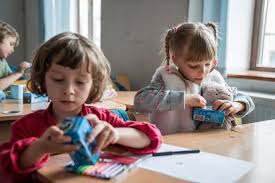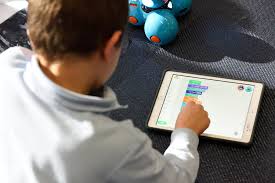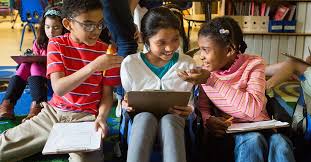What is the best learning game online?
5 Best Educational Online Games for Distance Learning
- Goosechase Edu. What is this? Report Ad. Cost: Free for Educator Basic.
- Socrative. Cost: Free for Educator Basic. Grades: K-12.
- Kahoot. Cost: Free Basic Version. Grades: K-12.
- Quizizz. Cost: Free. Grades: K-12.
- Gimkit.
What games can I play at school online?
Elementary Online Educational Games
- ABCMouse. Offering a full curriculum for children ages 2-8, this site includes fun and interactive games, songs, and puzzles for reading, math, science, and art.
- Adventure Academy.
- Buzzmath.
- Camp Wonderopolis.
- Carmen Sandiego.
- Creativity Express!
- Duck Duck Moose Reading.
- FunBrain.
Is there a free version of ABCya? All content is free, though teachers can pay for a subscription to use an ad-free version. Games are also available on mobile devices with the subscription.
How can 2nd graders make learning fun?
Fun learning games and activities for 2nd graders
- Play ball. Practicing catching, bouncing and kicking skills helps to build coordination and readiness for future sports teams.
- Create crazy captions.
- Math’s a beach.
- Make a bread mold garden!
- Where in the world?
- Handwriting cues.
- Create an obelisk.
- Create a comic book.
What is the best learning game online? – Additional Questions
What should 2nd graders be learning?
Kids entering second grade are expected to read short sentences or phrases. Most kids start second grade knowing how to add numbers up to 20. In second grade, kids are expected to think about how they approach solving problems.
What are 2nd graders interested in?
In 2nd grade, your child becomes a more experienced writer and reader by practicing their skills in more complex and comprehensive ways. Students read bigger and more complicated books, and write longer and more in-depth pieces. What’s more, second graders pursue projects that involve research and critical thinking.
How do you make learning fun for students?
Here are 10 ways you can make learning and education more fun and interesting for your students.
- Break up Your Lessons.
- Give Your Students Choices.
- Incorporate Games.
- Create Group Time.
- Get up and Move.
- Incorporate Hands-On Learning.
- Be Open to Creativity.
- Schedule Field Trips.
How can I make my 7 year old learn fun?
Fun learning activities for 7-year-olds
- Language games.
- Phonic games.
- Memory games.
- Listening games.
- Action games.
- Tactile games.
- Screen games.
- Car journey games.
How can I make teaching fun?
Teaching Strategies to Make Your Class More Fun
- Incorporate Mystery Into Your Lessons.
- Don’t Repeat Classroom Material.
- Create Classroom Games.
- Give Your Students Choices.
- Use Technology.
- Don’t Take Teaching so Seriously.
- Make Your Lessons Interactive.
- Relate Material to Your Students’ Lives.
How do you get students excited about learning?
Here are five common steps to get your students excited about learning:
- Encourage Students.
- Get Them Involved.
- Offer Incentives.
- Get Creative.
- Draw Connections to Real Life.
- Sponsored Online Programs.
How do you motivate a lazy student?
11 (more) tips to encourage unmotivated students
- Better student self talk.
- Stay motivated yourself.
- Work to your students’ interests.
- Change layout regularly.
- Know what to say.
- Provide a “why”
- Encourage goal-setting.
- Be clear with instructions.
How do you teach weak students?
Make a proper timetable for the weak student.
Whatever the condition and situation of the student may be, follow these magic tips for bringing out the best from the weak students:
- Keep and maintain eye contact.
- Make use of manipulatives.
- Be patient.
- Be understanding.
- Update the parents with the latest information.
How do you motivate weak students?
Plan for every class; never try to wing it. Pay attention to the strengths and limitations of each of your students. Reward their strengths and strengthen their weaknesses. If possible, set your room in a U-shape to encourage interaction among students.
What a teacher should not do in class?
25 Things Teachers Shouldn’t Do in the Classroom
- Yelling – No students like yelling at them.
- Short temper – It is just not fine if the role model lose temper in front of the students.
- Unprepared for class – Coming unprepared for class is the loss of valuable teaching time.
How can a slow learner be improved?
Teaching strategies to help slow learners.
Providing students with a quiet place to work to reduce distractions. Give genuine praise frequently by emphasising their strengths and giving positive feedbacks. Developing short lessons by limiting the working time to several short work periods rather than one long one.
How a weak student become intelligent?
Weak students must participate in co-curricular activities as these activities make the students develop a bond with other classmates and also channelizes their energies in the right direction. These activities also enable students to put their brains to work and make them smarter and sharper.
What do we call weak students?
feeble, feeble-minded, indecisive, infirm, irresolute, namby-pamby, soft, spineless, weak-kneed (informal) weak-minded, wimpish (informal)
How do you get an A+ in every class?
The 21 Secrets of A+ Students
- Know your learning style.
- Color code your notes.
- Start assignments immediately.
- Follow the instructions.
- Break tasks down into manageable chunks.
- Use technology to help you focus.
- Find an environment with few distractions.
- Study smart not hard.
How do you cater a slow learner?
How to work with slow learners?
- Reduce distractions by providing a quiet, private place to work.
- Emphasize strengths. Use lots of praise and reinforcement frequently.
- Make lessons short. Limit working time.
- Add variety to the academic routine.
- Work on material that is somewhat challenging but allows success.
What causes a child to be slow learner?
A slow learner is one who learner at a slower than average rate. The causes of slow learning are low intellectual learning and personal factors such as illness and absence from school, The environmental factors also contribute to this slow learning. Identification of the slow learners and the crucial step.
What are two main methods to deal with slow learners?
- STRATEGIES FOR “SLOW LEARNERS”
- Compensatory Teaching.
- Remedial Teaching.
- Instructional Strategies for Slow Learners.
- Develop Lessons that Incorporate Students’ Interests, Needs, and Experiences.
- Frequently Vary Your Instructional Technique.
- Incorporate Individualized Learning Materials.
- Incorporate Audio and Visual Materials.




